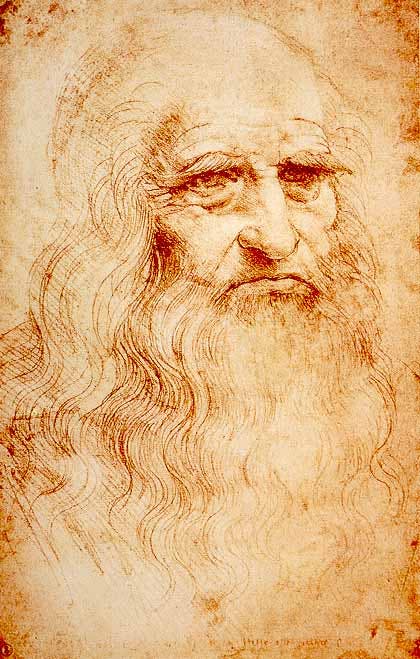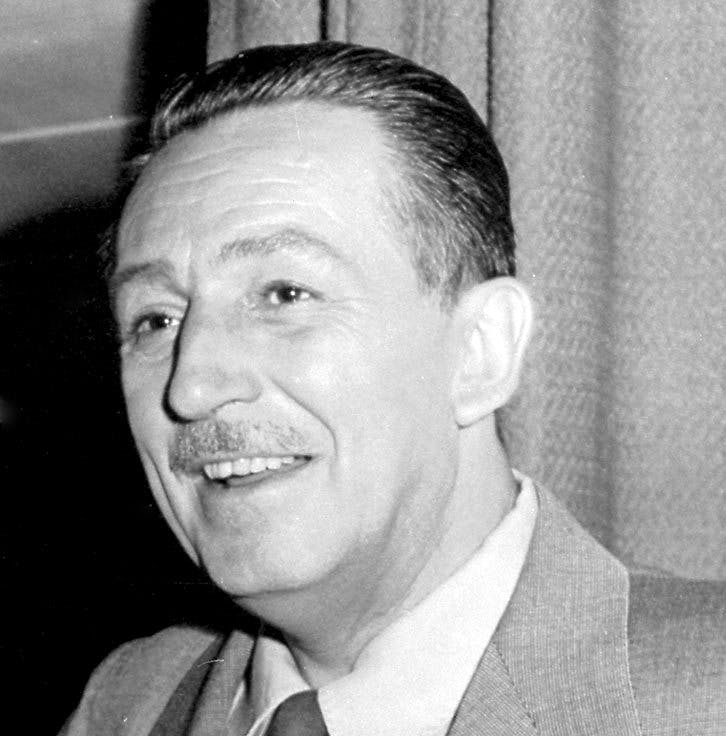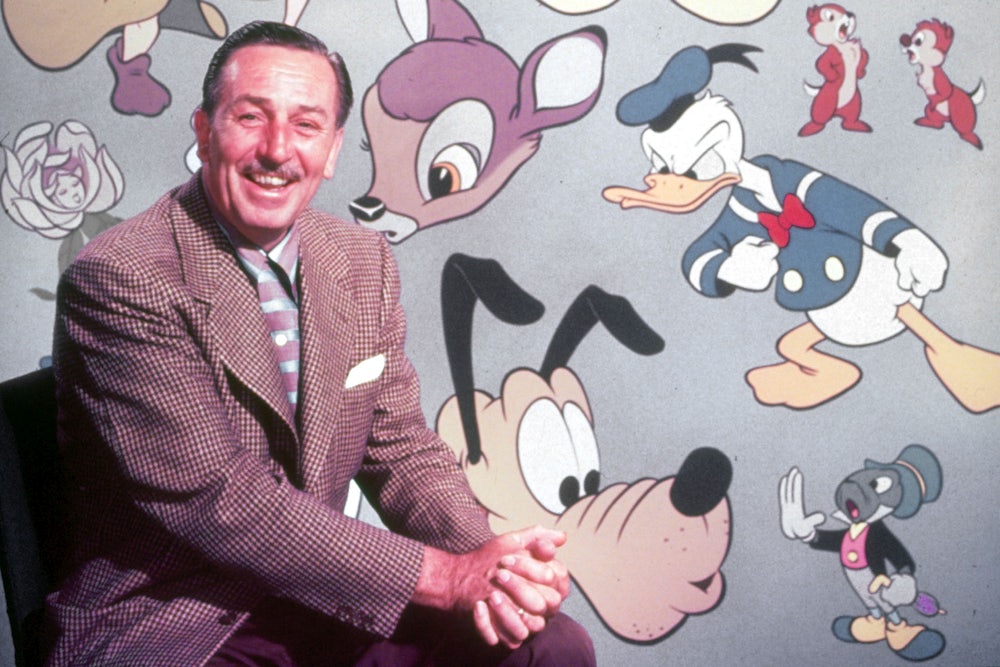Artists are commonly supposed to work by inspiration rather than by the conscious use of their intelligence. It is not always profitable to refute this insulting assumption, for the subtleties of a creative process are hard to communicate; and the tendency of the ignorant to surround the arts with the dignity of mystery has its advantages. But if it were necessary to prove that occasionally artists use their brains one could always produce Leonardo da Vinci and Walt Disney. The man Leonardo was an adventurous mind, fond of wheels, an engineer. As an artist he was an innovator constantly experimenting to widen the domain of art. He was (so far as I can make out) the first to go after painting round instead of flat, so that he produced an effect, new in his time, of the figures standing out from the background. Before that artists, judging color and outline more important than light and shade, had been satisfied with figures that seemed merely to be superimposed. Leonardo added to the capacity of expression the power to give depth of atmosphere. (La Giaconda, by the way, is not a good example of the point, for it has been tinkered with too often. Perhaps the Virgin and Child in the Louvre is a better one.)

Leonardo’s philosophy was that will was
the energy of life. He
was all for energy. Muscular movement and the
dynamics of anatomy
were favorite studies of
his. The sketches for his
famous equestrian
bronze of Francisco Sforza show that he
worked out that horse
in a whole range of
movement, galloping, rearing up, and still. Just like the drafts for what we
call a “film cartoon.” Incidentally, though Leonardo,
by an unaccountable oversight, neglected to invent the
cinema for himself and therefore had not its possibilities to play with, he was more than a bit of a cartoonist in
our modern sense. Ordinary shapes bored him.
He liked strange blobs and angles and burlesque outlines; he often drew
allegorical sketches,
moral and social satires
and fables.
As to the other one. Disney, I think, has the grave disadvantage of not having been dead 500 years. His generation appreciates his works, of course, but not, I fear, in the right way. Cinema audiences can hardly be expected to perceive his true significance. They are too preoccupied with sound accompaniment and idea content. Put on one side, please, the music and noise. Throw out Donald Duck. Forget “film cartoons.” Consider moving drawings.
The first moving drawings made for screen projection by that old Frenchman (whose name I forget) in 1877 (or was it 1885?) were elementary. The drawing was poor. They moved. That was as much as you could say. There followed a procession, mostly of Americans, including Winsor McKay, with his delightful but crudely moving “Trained Dinosaur, Gertie”; J. R. Bray and the magnificent “Colonel Heeza Liar”; Earl Hurd and “Bobby Bump”; Bud Fisher, who animated his newspaper comic-strip “Mutt and Jeff”; Sidney Smith; Wallace Carlson and “Dreamy Dud”; Paul Terry and “Farmer Al Falfa”; and Paul Felton and “Hodge Podge.” Not all of these black-and-white comics crossed the Atlantic for British inspection.
About fifteen years ago, so far as Britain was concerned, film-cartooning was topped by Max Fleischer’s “Koko, the Clown” and Pat Sullivan’s “Felix the Cat,” both of which had regular runs in our cinemas. With Fleischer the animation was too conventional to be artistically interesting, obviously just a trick of drawing over photographs. With Sullivan, it was evident that collective fertility in original tricks of draftsmanship and novel mechanical devices had enabled the whole art-form to be advanced a couple of miles or so. The movement, improving slowly, had up till then been confined to the simplest actions from the easiest angles, in profile mostly, tiresome in repetition. Sullivan’s animation was not yet subtle, but it was “all-round.” His figures moved from all angles, sometimes a bit painfully, and they had the beginnings of perspective and individual character. Then along comes Disney.

Pat Sullivan and his predecessors were, so to speak, penny-comic. Disney organized the experts and with specialized animators, better draftsmanship, color and multiplication of the number of drawings per foot soon pushed the art first to tuppenny comic, and then to threepenny. Now, by gosh! he has made it sixpenny, no, shilling! His last three features, “Snow White,” “Pinocchio,” and “Fantasia,” have been each an advance upon the last in artistry and extension of range. They reveal a growing understanding of the meaning of observed movement and therefore greatly increased powers of creating imagined movement. Compare the play of human expression in the face of Snow White with that in the faces of the Centaurettes in “Fantasia” and mark the striking improvement. Subtlety is now possible.
Now here’s the point. It was perfectly clear donkey’s years ago that graphic Art (with a capital A), hit by the mechanical age, needed a new idea. Heaven knows it hasn’t had one since somebody 2,000 years ago thought of painting pictures to frame and hang on the wall as a change from carpets. The improving quality of facsimile reproduction probably means sooner or later a consequent reassertion of real values in art as opposed to rarity and other artificial commercial values. The painting of pictures to hang on walls threatens to become an increasingly precarious profession except for the few best artists. Admire the new “schools” and “movements” as much as you like or as much as they deserve; their merits are irrelevant here. All the cubes, abstracts and surrealists ironmongery haven’t really saved the situation.
It was perfectly clear also that as the machinery for representing movement improved, some intelligent lad would drop to it that the new idea was here, that the means were present for opening a new and exciting vista of possibility in graphic Art (with a capital A). At present your conventional artist who wishes to represent the beauty and character of, say, a woman or a landscape discovers the emotional elements of shape and color in the subject, and, following principles of selection and emphasis, puts them down in clarified form. But the woman moves with, charm, the trees bend in the breeze. There are also emotional elements in the movements to be discovered, selected, emphasized and represented in heightened form. Why not?
National Galleries and Historical Museums are at present stuffed with portraits of the Great Men of the Past, painted looking out of their frames frozen in moments of time. It is obvious that as records at least these portraits are sadly deficient, for true character is not displayed in a man’s physical shell but in his individual use of it. A row of dead men don’t look so very unlike one another; but Roosevelt has his characteristically restless eye and sudden smile, Churchill his jutting forward of chin. We have many portraits which are great pieces of paint, so far as they go; but if, without losing their present excellent qualities, they gave us also with equal artistry in actual animation characteristic movements of the originals, a shrug of shoulder, curl of nostril, turn of head, they would be greater, both as art and as truth. Yes? No?
I do not know precisely how much Disney has to do with the making of his own films. Much of the modern technique of making animated drawings is not, of course, his creation. (Bray and Earl Hurd, I am told, had most to do with that.) I do not know whether he draws a line himself. I hear that at his studios he employs hundreds of artists to do the work. But I assume that his is the direction, the constant aiming after improvement in the new expression, the tackling of its problems in an ascending scale and seemingly with aspirations over and above mere commercial success. It is the direction of a real artist. It makes Disney, not as a draftsman but as an artist who uses his brains, the most significant figure in graphic art since Leonardo. In “Fantasia” he lifts the art of drawing movement right out of the “comic” and essays for the first time serious studies of a higher plane. Walpurgis Night (“Night on Bald Mountain”) and the prehistoric sequences (“Rites of Spring”) drive right to the foothills of the New Art of the Future.
Your stick-in-the-muds will scoff, no doubt. But I know what Leonardo would be up to if he were alive today. He would be in his back room inventing simplifications of animating processes and projection devices.
